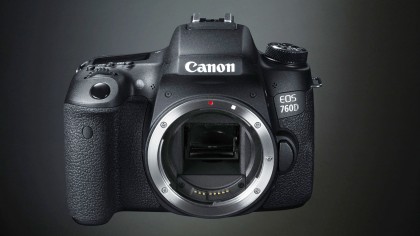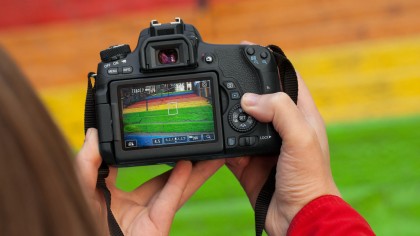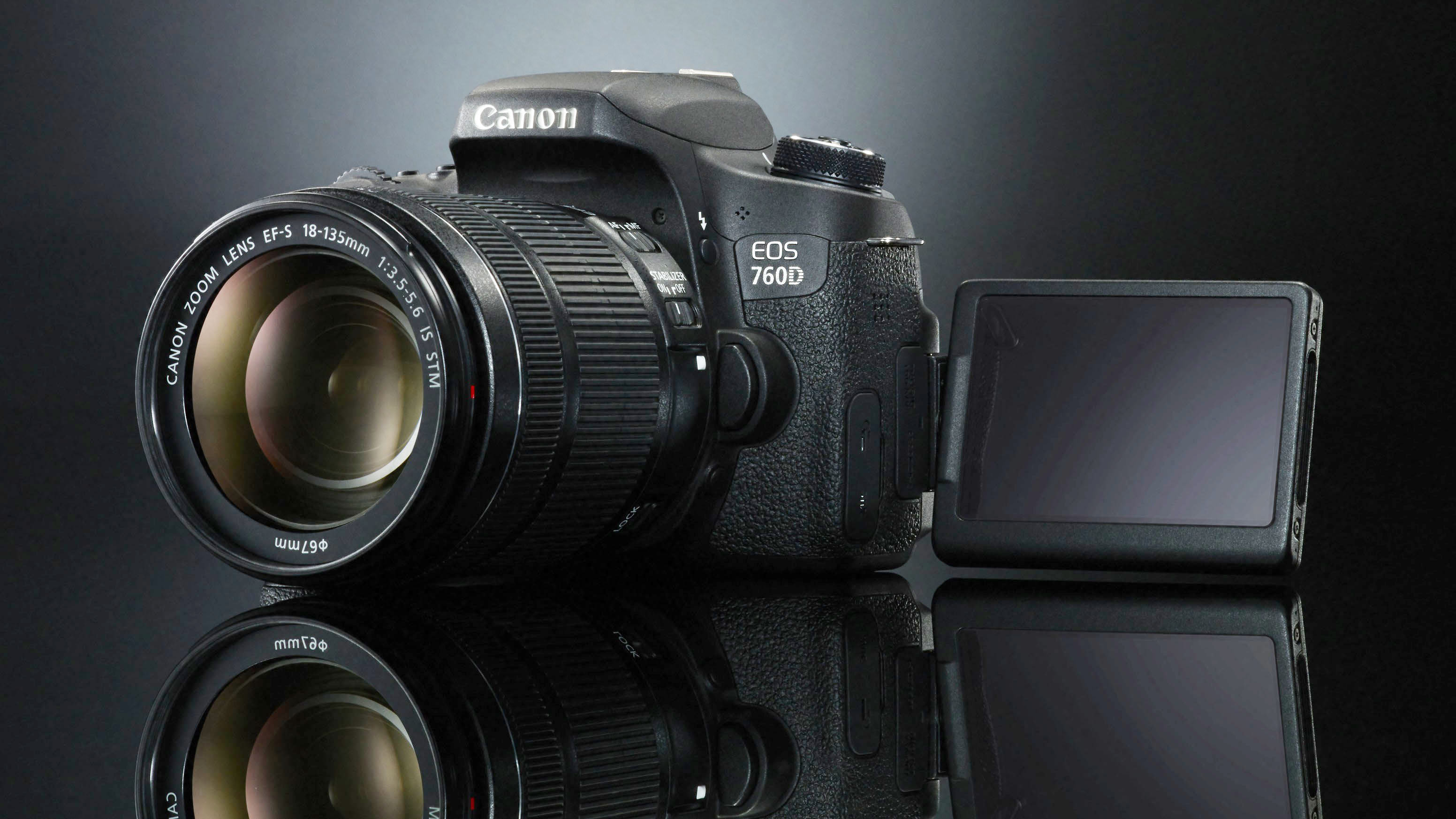TechRadar Verdict
This camera produces the same superb image quality as the 750D, but its better handling, helpful secondary LCD and electronic level makes it our choice of the two models. It's almost like a smaller, lighter 70D, with a better sensor.
Pros
- +
24Mp APS-C format sensor
- +
Great touch-screen and button/dial control combination
- +
Wi-Fi and NFC built-in
- +
Vari-angle screen
Cons
- -
Anti-aliasing filter lowers detail resolution compared to rivals
- -
Viewfinder covers only 95% of the scene
- -
Slow route to setting AF point
Why you can trust TechRadar
New: The EOS Rebel T6s (known as the EOS 760D outside the US) has since been replaced by the EOS 77D, which benefits from a newer sensor, improved AF and performance.
In a move that runs the risk of confusing the market, Canon has introduced two upgrades to the EOS 700D (EOS Rebel T5i); the 750D and the 760D (reviewed here). Like the 700D, the 750D and 760D are DSLRs in Canon's 'beginners' range. The 760D is at the top of the group, but below the Canon 70D, which sits at the bottom of the 'enthusiast-level' range.
Known as the Rebel T6s in US territories, the 760D has a very similar specification to the 750D along with a few extra features that impact upon its handling, making it more suitable for experienced photographers or those wanting flex their creative muscles.
Inside the 760D is the same 24.2-million-effective-pixel CMOS sensor and Digic 6 processor found in both the 750D and the EOS M3. This means that it also has the same Hybrid CMOS AF III autofocus system, which combines phase detection and contrast detection, for use when using Live View mode to compose images and video on the main screen on the back of the camera.

In a small but significant difference from the 750D, the 760 has a Servo autofocus option in Live View and video mode. When this is selected the camera continues to focus the lens for as long as the shutter release is depressed half-way. Both cameras have a Continuous AF option in the Live View section of the main menu. This is designed for use in video mode and to pre-focus when shooting stills as, when activated, focus is adjusted fairly slowly when the shutter release isn't pressed.
There's a 19 cross-type point autofocus system available for use when composing images in the viewfinder. When this system is in use the camera can select the appropriate point to use automatically in 19 point AF mode, or it can be selected manually in Zone AF or Single point AF mode. There are 5 zones available for selection in Zone AF mode.
When Zone AF mode is set in Continuous Autofocus (C-AF) mode, the camera switches automatically between the AF points within the selected zone. In 19-point C-AF mode the camera follows the subject around the frame, switching between AF points.
Exposure metering also changes depending upon whether images are captured using the viewfinder or the main screen for composition. In reflex mode (when the viewfinder is used), the 760D uses Canon's new 7,560-pixel RGB and InfraRed metering sensor. Although the 7,560 pixels are grouped into 63 segments, they each have their own RGB-IR filter and are read independently, which should make the system more accurate than the 700D's. There's still a weighting applied to the brightness of the subject under the active AF point, but it should be better able to assess the scene as a whole and give a balanced exposure.

In Live View mode the same Evaluative, Centre-weighted, Partial and Spot metering options are available, although the sizes of the areas covered differs slightly, and the measurements are made using the imaging sensor itself.
Naturally as they share the same sensor, processing engine and buffer the 750D and 760D have the same maximum continuous shooting speed (5 frames per second) and native sensitivity range; ISO 100-12,800 with an expansion setting of ISO 25,600 for stills. It's also possible for the cameras to set sensitivity automatically within the range ISO 100-6400. The native range for movies is ISO 100-6400 with an expansion setting of ISO 12,800.
Full HD (1920x1080) movies are recorded in MP4 format with the H.264 codec at 30, 25 or 24fps and the sound level may be adjusted manually. As usual, the duration is limited to 29 minutes 59 seconds or 4GB. If the file size exceeds 4GB a new file is created automatically. The audio level can also be adjusted manually and there's an external microphone port, but no port for headphones. It's possible to control aperture, shutter speed and sensitivity in Manual exposure mode, but exposure is automatic in Aperture priority and Shutter priority mode.
One handy addition in the 760D is an electronic level that can be displayed on the screen on the back of the camera, or in the viewfinder. This indicates horizontal tilt, but not up/down tilt, so it's useful for getting horizons straight, but it won't help when you're trying to ensure that the sensor is parallel to a building to avoid converging verticals. Like the Canon 7D Mark II, the 760D's viewfinder has a dedicated level icon and it doesn't use the AF points – so it can be seen when pressing the shutter release to focus the lens.
Like the 750D, the 760D has Wi-Fi connectivity as well as NFC (Near Field Communication) technology for connecting the camera to a smartphone or tablet for remote control and image sharing. The camera can also be connected to Canon's Connect Station CS100 for image storage.
